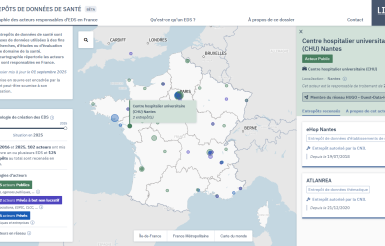Mapping user journeys for post-mortem data management
Rédigé par Alixe Peraldi (designer) et Audrey Pety (designer)
-
15 octobre 2025For Issue No. 10 of the IP report, “Our data after us”, the LINC analyzed the user experience (UX) of major digital services to understand how people are enabled to manage and configure their post-mortem data settings.
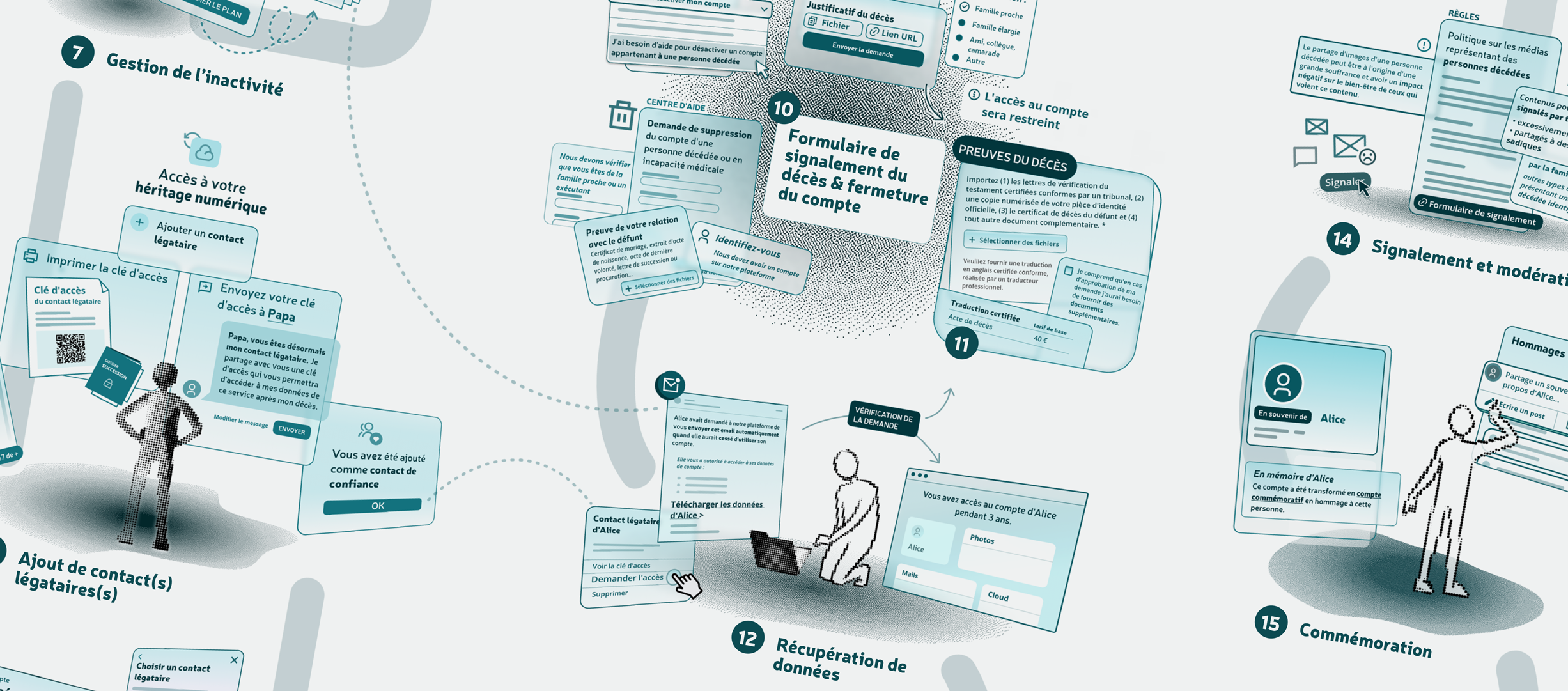
The European General Data Protection Regulation (GDPR) applies only to the data of living individuals, although EU Member States may adopt national laws addressing related matters. In this context, the way digital services approach post mortem data is not governed by a strict or harmonized legal framework across Europe, leaving each stakeholder free to make its own choices regarding interface design. As a result, there exists a diverse landscape of approaches from one digital service to another, which the CNIL’s Digital Innovation Lab (LINC) has mapped out through a non-exhaustive yet representative overview of current practices.
The details of this analysis are presented in IP Report No. 10 – “Our Data After Us”, in Section 3, “The user experience of digital death in 2025”. Below, we outline the applied methodology and provide a poster visualizing this overview.
"Reverse design" of three typical user journeys
Continuing its research on interface design, the LINC analyzed the post mortem user experience (UX) by studying how twenty digital platforms guide users in managing post-mortem data (their own or that of deceased relatives). The analysis covered aspects such as information accessibility, content semantics and tone, interaction models, graphic design, and multimedia components.
The study made it possible to conduct a reverse design (inspired by reverse engineering) analysis of three typical user journeys, highlighting the different options offered by online services and the possible user situations:
• Ante mortem configuration: when a person wishes to anticipate and configure the management of their data after death;
• Post mortem actions: when a rightsholder or heir must intervene on the accounts of a deceased user;
• Post mortem interactions: when another user of the same services encounters or engages with the data or account of a deceased person.
The three typical user journeys we present do not correspond to real-life user flows. Instead, they combine situations observed across the different services analyzed, providing an overview of the various features available to users. This mapping synthesizes user experience trends and the and the different types of user flows, bringing them together in a collage of illustrated examples.
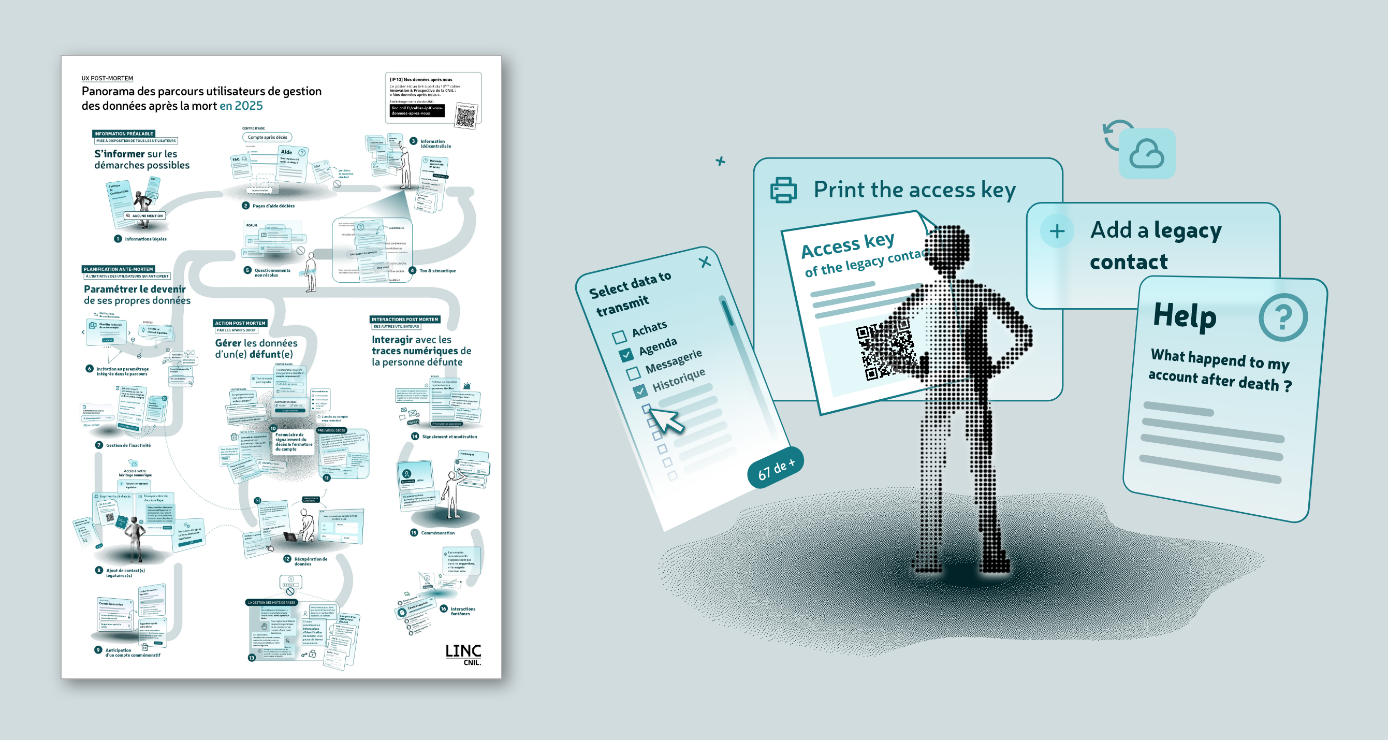
Explore the map in PDF
Printable versions of the poster, in multiple formats, can be downloaded at the end of the article.
Methodology for user journey analysis
The approach chosen for this analysis began with an inventory of informational references across twenty digital services:
- Eleven social networks: BeReal, Discord, Facebook, Instagram, LinkedIn, Mastodon (Piaille.fr instance), Pinterest, Snapchat, TikTok, Twitch, X (Twitter), and YouTube.
- Three messaging services: Signal, Telegram, and WhatsApp.
- Five tool suites: Apple, Google, Meta, Microsoft, and Yahoo! (YouTube and Google Workspace journeys, as well as Facebook, Instagram, WhatsApp, and Meta, were analyzed separately to capture potential differences, but are sometimes referred to as a single service when portions of the user journey overlap.)
- Six additional services: Airbnb, Tinder, Vinted, WordPress, World of Warcraft.
Initially, the privacy policies and terms of service were reviewed, along with informational pages or help center sections dedicated to post mortem data management, when available. The various features offered were catalogued, as well as any links to processes and forms, and examples of the semantic choices made by each service. It should be noted that this analysis does not concern legal obligations under the GDPR; it is not a compliance assessment. All collected elements are available in the database downloadable at the end of this article, from which some general statistics on the post mortem UX in 2025 can be extracted.
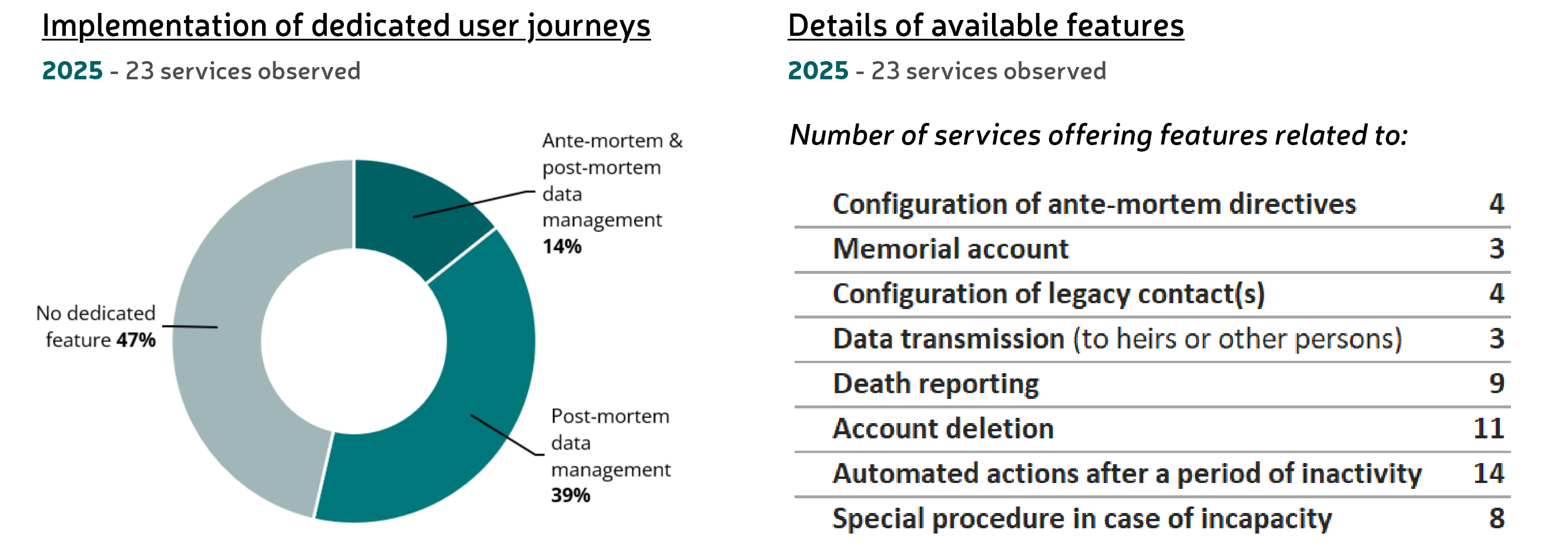
In a second phase, the user journeys of the seven platforms offering specific post mortem management processes were analyzed in greater qualitative detail, with the aim of reconstructing a typical user trajectory. To do this, we conducted searches using a search engine (Google), adopting the perspective of a user trying to identify post mortem data management services on these seven major platforms. We analyzed the results that appeared first, which were considered the user’s initial point of contact with the service, then documented the suggested user journeys and potential friction points, as illustrated in the mapping presented above. Section 3 of IP Report No. 10 “The user experience of digital death in 2025” provides a detailed account of these observations.
A topic still on the margins of literature and design practice
This overview of post mortem data management features in 2025, although not exhaustive, shows that users have access to multiple actions, with mechanisms varying depending on the platform. Even when two services offer similar processes, such as “legacy contacts” or “memorial accounts”, they are accessible in different ways, requiring users to research each case individually and adapt their queries for each platform. This diversity of terminology, access paths, and available actions turns post mortem data management into a significant effort. Yet, this important aspect of the user experience has not yet been addressed through the unification of practices in Human-Computer Interaction (HCI) research. To complement our study, we therefore conducted a brief review of the existing academic literature, as well as guides aimed at interface designers.
While scientific publications on memorial Facebook accounts (Brubaker & Callison-Burch, 2016) shed light on the development of this specific feature, platforms do not publish their current user research on post mortem functionalities. Research teams, such as the Identity Lab at the University of Colorado – Boulder (which collaborated with Facebook on the creation of their “legacy contact” feature), regularly publish user studies on grief and the management of deceased users’ profiles on social networks. To date, only a single framework (Erickson & Krum, 2020), proposed by the Aspen Political Technology Center, offers some criteria for implementing post mortem features depending on the type of service. Some studies also address more specific points of the user journey, such as a study on the semantics to use in the event of death conducted by the UK Department for Work and Pensions (Bramble, DWP Digital, 2020). However, these findings have not yet been aggregated or translated by designer communities into concrete user journey design practices. Although as early as 2009, researchers Michael Massimi and Andrea Charise called for the design of “thanatosensitive” services that actively account for user mortality, by 2025 these ideas have not yet become widely recognized recommendations or implemented practices.
It should also be noted that the term “post mortem” generates a large number of false positives in our context, as it can refer not only to processes following the death of an individual, but also to technical incident reviews or the conclusion of an unsuccessful project.
Post-Mortem UX Posters
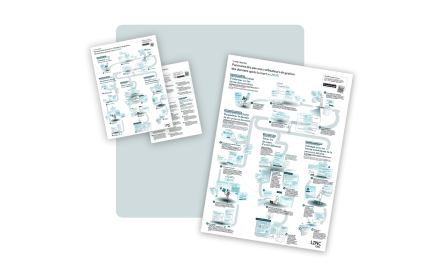
Explore the “reverse-design” of three typical user journeys
The mapping of user journeys for post-mortem data management is available for download and can be printed in large format (A0) or medium format (A2) with text on the reverse side.
[PDF - 711 Ko] English version
[PDF - 2,7 Mo] French version only
Dataset
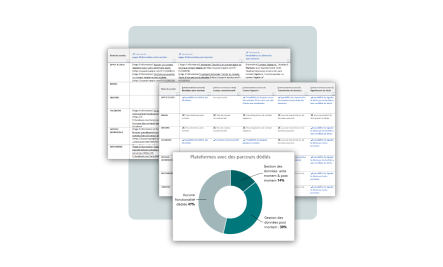
Download the data collected during this exploration
The study’s statistics, the links to informational mentions for the 20 analyzed services, and the details of the features offered by each are all catalogued in this database.
[ODS - 62 Ko] French
[XLSX - 121 Ko] French


